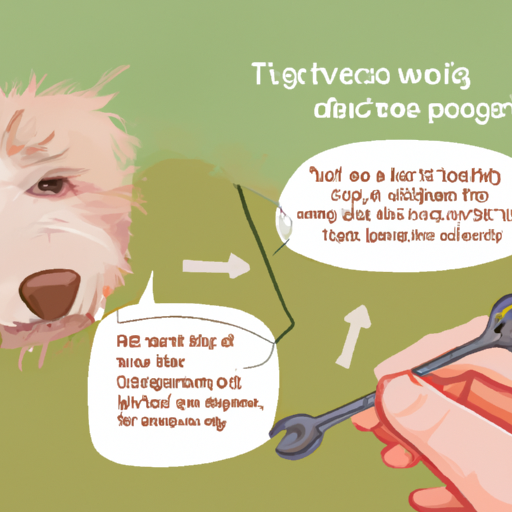“`markdown
How to Take Ticks off Dogs: A Comprehensive Guide for Caregivers
Dealing with ticks can be a distressing experience. As a caregiver, you’re likely well aware that your furry friend could pick up these unwelcome guests in their daily adventures. But don’t worry, you’re not alone. Let’s walk through the process together, step by step.
1. Identifying Ticks on Your Dog
You should know what you’re dealing with before you start. Ticks are small arachnids that feed on the blood of mammals. They can vary in size, from a pinhead to a pencil eraser, especially when engorged.
- Visual inspection: Regularly inspect your dog for any unusual bumps or specks.
- Physical examination: Run your hands over your dog’s body, feeling for any bumps or irregularities.
2. Equipment You Need
Having the right tools at your disposal can make the process much safer and easier.
- Tick removal tool: Specialized tick removal tools are available at most pet stores.
- Gloves: Protect yourself from potential infections.
- Antiseptic: Clean the area before and after the removal.
3. How to Remove the Tick
Here’s a step-by-step guide to removing ticks from your dog:
- Put on your gloves.
- Use the tick tool to surround the tick.
- Gently twist and pull upwards, ensuring the entire tick is removed.
- Clean the area with antiseptic.
Note: Never use your fingers to remove a tick. The pressure could cause the tick to burst, increasing the risk of infection.
4. Aftercare and Keeping Ticks at Bay
After you’ve successfully removed the tick, it’s important to take steps to prevent future infestations.
- Regularly inspect your pet: Frequent checks can catch ticks before they become a problem.
- Tick repellent: Products such as collars, sprays or spot-on treatments can keep ticks at bay.
- Keep your environment clean: Regularly mow lawns and remove leaf litter to reduce tick habitats.
| Method | Effectiveness | Notes |
|---|---|---|
| Tick collars | High | Change every 6-8 months |
| Spot-on | Medium | Apply monthly |
| Environmental | Low | Regular upkeep required |
5. When to Seek Professional Help
If you’re unsure about any part of the process, or if your dog seems sick after a tick bite, don’t hesitate to seek professional help. Early intervention can prevent serious complications.
Frequently Asked Questions
Q: Can I use tweezers to remove ticks?
A: While possible, it’s safer and more effective to use a specialized tick removal tool.
Q: What diseases can ticks transmit to dogs?
A: Ticks can transmit a variety of diseases, including Lyme disease and Rocky Mountain spotted fever.
Q: Should I kill the tick after removal?
A: Yes, it’s recommended to kill ticks after removal by placing them in alcohol or flushing them down the toilet.
Q: Can I use tick repellents on puppies?
A: Always consult with a vet before using any products on puppies or young dogs.
“`



